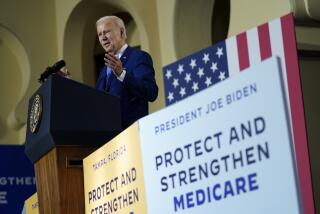Cost Differences in Health Plans
- Share via
I feel compelled to comment on the column by Leroy Schwartz concerning federal health care policy and managed care (Commentary, Feb. 29). Schwartz argues that the public will not buy managed care plans without government or employer pressure, and that those poor consumers who are “forced” into HMOs are unhappy and dissatisfied with the results.
I suggest that Schwartz visit California or the Minneapolis-St. Paul area for a reality check. In these highly competitive markets, consumers are “forced” to buy HMO policies because traditional fee-for-service health care plans are incredibly expensive. For example, USC can only make its fee-for-service plan attractive to USC faculty and staff by subsidizing a member’s premiums by $2,600 per family per year in excess of the university’s contributions toward Kaiser or PacifiCare family plans. It is the unwillingness of the fee-for-service physician to curtail the unwarranted use of high-cost services that has forced consumers into health care plans that carefully weigh costs and outcomes.
That brings me to the Medicare program. Today, the average taxpayer is financing the purchase of a health benefits program for the elderly and disabled that the taxpayer can no longer afford to buy for his/her family. It is time that Medicare be brought back in line with the health care coverage purchased by average taxpayers. If Medicare beneficiaries want to purchase fee-for-service coverage, let them pay the difference.
JEFFREY S. McCOMBS PhD
Health Economist,
Department of Pharmaceutical Economics and Policy,
USC
More to Read
Inside the business of entertainment
The Wide Shot brings you news, analysis and insights on everything from streaming wars to production — and what it all means for the future.
You may occasionally receive promotional content from the Los Angeles Times.










